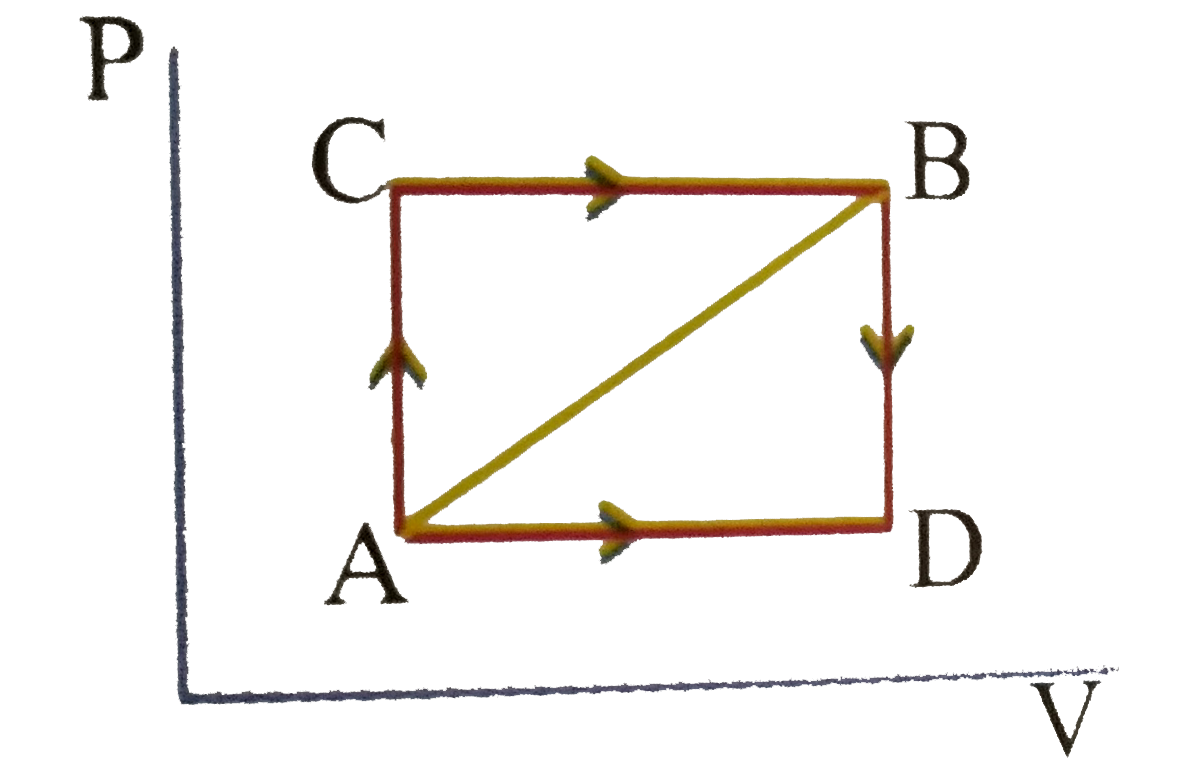If ΔU and ΔW represent the increase in internal energy and work done by the system resectively in a thermodynamical process, which of the following is true?
The correct Answer is:A
ΔQ=ΔU+ΔW in adiabatic process ΔQ=0
Topper's Solved these Questions
- NEETBOOK - NEET PREVIOUS YEAR (YEARWISE + CHAPTERWISE)CHAPTER - NEETEXERCISE - MCQ
95 Videos
- NEETBOOK - NEET PREVIOUS YEAR (YEARWISE + CHAPTERWISE)CHAPTER - NEETEXERCISE - PHYSICS
157 Videos
- MOTION IN TWO AND THREE DIMENSIONBOOK - NEET PREVIOUS YEAR (YEARWISE + CHAPTERWISE)CHAPTER - MOTION IN TWO AND THREE DIMENSIONEXERCISE - All Questions
47 Videos
- NEET 2020BOOK - NEET PREVIOUS YEAR (YEARWISE + CHAPTERWISE)CHAPTER - NEET 2020EXERCISE - All Questions
45 Videos
Similar Questions
Knowledge Check
If ΔU and ΔW represent the increase in internal energy and work done by the system resectively in a thermodynamical process, which of the following is true?
AΔU=−ΔW , in a isothermal processBΔU=−ΔW in a adiabatic processCΔU=ΔW , in a isothermal processDΔU=ΔW , in a adiabatic processIf ΔU and ΔW represent the increase in internal energy and work done by the system respectively in a thermodynamical process, which of the following is true ?
AΔU=−ΔW, in a adiabatic processBΔU=ΔW, in isothermal processCΔU=ΔW, in a adiabatic processDΔU=−ΔW, in a isothermal processWe consider a thermodynamic system. If ΔU represents the increase in its internal energy and W the work done by the system, which of the following statements is true?
AΔU=−W in adiabatic processBΔU=W in an isothermal processCΔU=−W in an isothermal processDΔU=W in an adiabatic process
We consider a thermodynamic system. If ΔU represents the increase in its internal energy and W the work done by the system, which of the following statements is true?
View SolutionIf ΔQand represent the heat supplied to the system and the work done on the system respectively, then the first law of thermodynamics can be written as
View SolutionThe first law thermodynamics was gives as q=ΔU+(−w), where q is heat given to a system and ΔU represent increase in internal energy and -w is work done by the system. Various process such as isothermal, adiabatic, cyclic, isobaric and isochoric process in terms to first law of thermodynamics leads for important results. The molar heat capacity for 1 mole of monoatomic gas is 3/2R at constant volume and 5/2R at constant pressure.
Which of the following statements are correct:
View SolutionThe first law thermodynamics was gives as q=ΔU+(−w), where q is heat given to a system and ΔU represent increase in internal energy and -w is work done by the system. Various process such as isothermal, adiabatic, cyclic, isobaric and isochoric process in terms to first law of thermodynamics leads for important results. The molar heat capacity for 1 mole of monoatomic gas is 3/2R at constant volume and 5/2R at constant pressure.
A system is allowed to move from state A to B following path ACB by absorbing 80 J of heat energy. The work done by the system is 30 J. The work done by the system in reaching state B from A is 10 J through path ADB which statements are correct :

1. Increase in internal energy from state A to state B is 50 J.
2. If path ADB is followed to reach state B. ΔU=50J
3. If work done by the system in path AB is 20 J, the heat absorbed during path AB = 70 J.
4. The value UC−UA is equal to UD−UB.
5. Heat absorbed by the system to reach B from A through path ADB is 60 J.
View SolutionThe first law of thermodynamics was given as q=ΔU+(−w), where q is heat given to a system and ΔU represents increase in internal energy and −w is work done by the system. Various processes such as isothermal, adiabatic, cyclic, isobaric and isochoric process in terms of I law of thermodynamics leads for important results. The molar heat capacity for 1 mole of monoatomic gas is 32R at constant volume and 52R at constant pressure.
Which of the following statements are correct? (1) Both work and heat appears at the boundaries of system. (2) Heat given to a system is given +ve sign. (3) Heat given to a system is equal to increase in internal energy under isothermal conditions (4) Heat given to a system is used to increase internal energy under isochoric conditions (5) Both work and heat are not state functions but their sum (q+w) is state function.
View Solution
